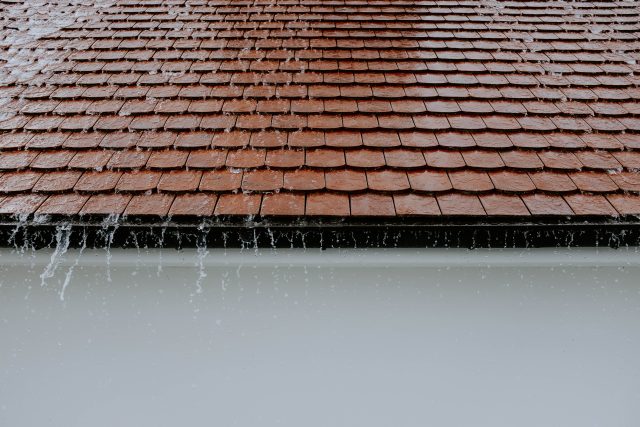
As a homeowner, you likely understand the importance of safety when it comes to your property. From regular maintenance to renovations, ensuring the well-being of your home is paramount. In this article, we’ll delve into a topic that might not be top-of-mind when it comes to roofing projects but is nonetheless critical: electrical safety. Specifically, we’ll explore how Portable Appliance Testing (PAT testing) plays a crucial role in keeping your home safe during roofing work.
The Roofing-Electrical Connection
Roofing projects are not just about shingles and tiles; they also involve the electrical systems that may be present on your roof. From wiring for lighting to solar panels generating clean energy, roofs often house various electrical components. This roofing-electrical connection means that when you undertake roofing work, there’s more to consider than just the structure of your roof.
Imagine this scenario: roofers are repairing or renovating your roof, and in the process, they inadvertently damage electrical wiring or disconnect components. Or, if it’s a particularly rainy day, the risk of water seeping into exposed electrical systems becomes a concern. These are the kinds of challenges that highlight the crucial link between roofing and electrical safety.
Ensuring Electrical Safety
Now, let’s talk about ensuring electrical safety during roofing projects. Whether you’re hiring roofing contractors or embarking on a DIY roofing project, electrical safety should be a top priority. Here’s how to go about it:
Safety Assessments
Before any roofing work begins, it’s essential to conduct safety assessments of the existing electrical systems on your roof. Identify potential risks, and if necessary, consult with an electrician to ensure all safety measures are in place.
Temporary Disconnections
If your roofing project requires the disconnection of electrical components, it’s vital that this is done by a qualified electrician. Proper disconnections help prevent accidents during the roofing process.
Post-Roofing Safety Checks
Once the roofing work is complete, it’s equally important to conduct post-roofing safety checks on the electrical systems. This ensures that everything is in working order and safe for use.
By taking these precautions, you not only protect the integrity of your electrical systems but also ensure the safety of everyone involved in the roofing project.
The Role of PAT Testing
Now that we’ve established the need for electrical safety during roofing work, let’s delve into the role of Portable Appliance Testing (PAT testing) in this context. You might wonder how PAT testing, typically associated with portable electrical appliances, fits into roofing. Well, it plays a significant role in ensuring the safety of all electrical equipment and tools used in roofing projects.
PAT testing involves a thorough examination of electrical appliances and equipment to check for any defects or potential hazards. This testing isn’t limited to small household appliances; it extends to larger equipment used in various industries, including construction and roofing.
When it comes to roofing projects, PAT testing ensures that all the electrical tools and equipment used by contractors are in good working condition. From power drills and extension leads to generators and safety equipment, every electrical item undergoes testing to verify its safety and reliability.
Benefits of Regular PAT Testing
You might wonder why regular PAT testing is necessary for roofing projects. The benefits of this testing go beyond just compliance with regulations; they directly impact the safety and efficiency of your roofing work:
Preventing Electrical Accidents: PAT testing identifies potential issues with electrical equipment before they can cause accidents, protecting both workers and homeowners.
Compliance with Regulations: In many countries, including the UK, PAT testing is a legal requirement for ensuring the safety of electrical equipment in the workplace.
Reduced Downtime: By ensuring that all electrical equipment is in optimal condition, you minimise the risk of unexpected breakdowns during your roofing project. This helps you complete the work efficiently.
Peace of Mind: Knowing that all electrical tools and equipment have undergone rigorous testing provides peace of mind, both for homeowners and roofing contractors.
Insurance Compliance: Some insurance policies may require evidence of PAT testing to provide coverage for roofing work. Compliance can save you from potential insurance issues.
Case Study: How PAT Testing Saved the Day
To illustrate the real-world importance of PAT testing in roofing, let’s look at a case study where PAT testing played a crucial role in preventing an electrical incident during a roofing project.
Client: Mr. and Mrs. Blake
Location: Woking, UK
Date: May 2023
Introduction
Mr. and Mrs. Blake, homeowners in Woking, Surrey had been enjoying the benefits of solar panels on their roof for several years. Not only did the solar panels reduce their electricity bills, but they also contributed to a greener environment. However, like any roof, their solar panel-equipped roof was subject to wear and tear over time. When they noticed a roof leak during a heavy rainstorm, they knew it was time for repairs. They contacted local roofers in Woking, Banks Roofing Surrey and Hampshire, a company in the area.
The Challenge
Repairing a roof with solar panels presents a unique set of challenges. It’s not just about fixing the roof itself but also ensuring the integrity and functionality of the solar panels. The Banks Roofing team faced several challenges:
Leak Detection: The primary concern was to identify the exact source of the leak and determine whether it was related to the solar panel installation.
Solar Panel Protection: The solar panels on the roof needed to be safeguarded during the repair process to prevent damage or disruption to their functioning.
Seamless Integration: Once the roof repair was complete, it was crucial to seamlessly integrate the solar panels back into the system to ensure they continued generating electricity efficiently.
The Solution
Banks Roofing approached the project with a meticulous plan to address these challenges effectively:
1. Leak Detection and Roof Repair:
The experienced roofing team conducted a thorough inspection of the roof to pinpoint the source of the leak.
Roof repairs were executed meticulously, including the replacement of damaged shingles, sealing of gaps, and reinforcement of vulnerable areas.
2. Solar Panel Protection:
To protect the solar panels during the repair work, a temporary barrier was erected around the panel array.
Careful measures were taken to avoid any impact on the solar panels, ensuring they remained intact and undisturbed.
3. Seamless Solar Panel Integration:
Once the roof was repaired, the team ensured the solar panels were seamlessly integrated back into the electrical system.
All connections were carefully checked, and any potential issues were addressed to guarantee optimal solar panel performance.
The Outcome
The project was a resounding success, and Mr. and Mrs. Blake were thrilled with the results:
The roof leak was completely resolved, providing the homeowners with peace of mind during rainy weather.
The solar panels continued to function at their full capacity, with no disruption to their electricity generation.
Banks Roofing Ltd’s efficient and professional approach meant minimal inconvenience to the homeowners throughout the repair process.













